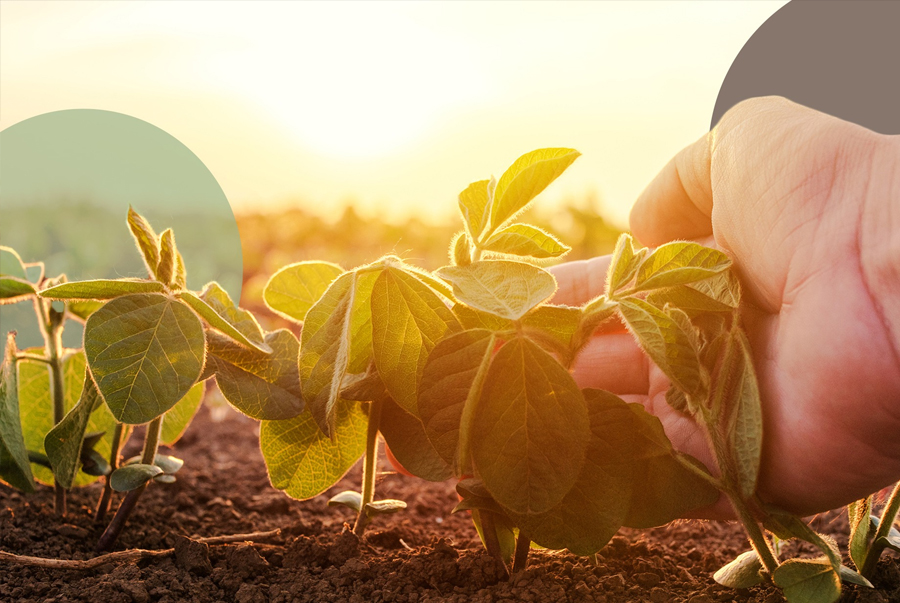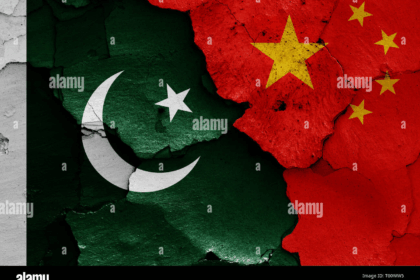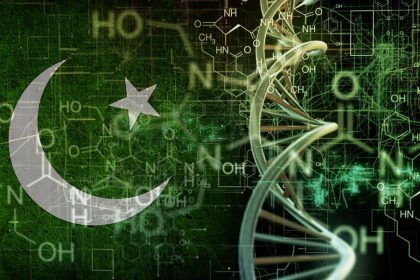Hi readers! Cary Fowler: a Biodiversity warrior once said,
“It is impossible to talk about slowing change without talking about reducing CO2 emission, equally it is impossible to talk about adapting to climate without considering how we will feed ourselves, and it is out of question that we can adapt agriculture without conserving “Crops Diversity.”
How many of you have ever heard about Biodiversity? Not many? Ok Let’s talk about this but at the first place let me tell you that we reviewed this subject in 2002 (Pakistan Journal of Biological Sciences 5) under the title “Food Security in the New Millennium: The Role of Agricultural Biodiversity” well read and well received in the scientific community. Today I decided to share it with you with updates of the last 20 years.
What is the concept of food security?
Food and Agriculture Organization of the United Nations has defined food security as a “state of affair where all people at all times have access to safe and nutritious food to maintain a healthy and active life”. During the last 50 years however, food security has progressed from purely physical availability to provision of food to individuals at global level.
According to Swaminathan (1999), food security is a multi-objective phenomenon dependent on intricate social, cultural, economic and political relationships that differ enormously between and within the countries and with changing time(Think, how true he was and still is?).
The current agricultural production per capita is significantly higher than it was 30 years ago, while the consumption per capita and the population have increased enormously, suggesting that enough food is available at the global level to ensure food security to everyone provided the food is distributed equally.
This, however, is not the case. The industrialized countries are consuming 3885 to 3782 whereas, Sub-Saharan Africa is consuming 2040 calories per capita per day, which indicated that food distribution is not in line with production and population growth. Therefore, despite adequate availability of food at the global level, food security cannot be assured unless food is distributed equally which is beyond imagination even at local level what to talk about global scenario?
What is the current situation in Pakistan?
Presently, the situation on the ground is that current GDP of the country is expected to reach 292.00 USD Billion by the end of 2022, which is expected to shrink due to history’s worst flood that destroyed all the infrastructure on one third of Pakistan, displacing millions of people who have nothing to eat, drink and wear except the cloths they were wearing from day zero of the flood. However, According to USAID (https://www.usaid.gov/pakistan/food assistance) Pakistan has produced more food than its population consumes and has become a major producer of wheat and rice. (I have reported in one of blogs that we are self-sufficient in wheat as we have produced 27.39 MT and we need only 26 MT, rice, as we have produced nearly 70 MT and we need only 40 MT, and sugar cane, as we are producing over 80 MT and we need only 40-50 MT).
However, the poorest and the most vulnerable people in Pakistan cannot afford sufficient and nutritious diet despite overall growth in food production.
According to UN World Food Program (WFP) chronic poverty, recurring disasters, and political and economic volatility drive undernutrition and food insecurity in some areas of Pakistan. More than 20 % of Pakistan’s population is undernourished, and nearly 45% of children younger than five years of age are stunted.
Dear readers, this is not because of food shortage but due to our attitude toward these deserving people. We are exporting so-called surplus
rice, wheat, and sugarcane to earn dollar instead of lowering the price thereby increasing purchasing power of these poor
Pakistan is also prone to extreme weather and disasters. Who else is more affected by these extremes than the poor of Pakistan? Look at history’s worst flood and the people who are affected: 90% are poor of the poorest. Estimates are still underway but apparently Pakistan would be most food insecure country in the years to come because flood has destroyed all the standing crops, sheep and goats of the poor and their saved food as well. It is beyond imagination, how Pakistan will handle this gigantic task? One thing is certain that we have to double our production in the years to come to meet the forthcoming food deficit and persistent food insecurity.
For food security, diversification, flexibility, adaptability, and resilience are the key factors. Ensuring food security is perhaps the greatest challenge in general for the world today and for Pakistan in particular in the years to come due to current flood situation.
It is a complicated phenomenon in which those facing food insecurity will have to decide themselves how better they can attain food security while keeping in mind their social and economic constraints.
According to 2022 economic survey, Pakistan is consuming 2780 calories per capita per day but according to world Bank’s 2018 estimates, Pakistan is consuming 2486 calories per capita per day and is at 135th, number in the world in descending order. Since the world agricultural production has enormously increased. (According to November 21, estimated total production of primary crops increased by 53 percent between 2000 and 2019, hitting a record high of 9.4 billion tons in 2019. Half of global primary crop production is made up of just four crops: sugar cane, maize, wheat, and rice) indicating thereby that everyone on the planet earth would be food secure despite increase in world populations, but this is not the case. The effluent countries are consuming more calories than ever before with Ireland consuming 3885 calories per capita per day, USA 2782, Afghanistan 2014, and Central African Republic merely 1186 calories per capita per day. It means food production is not in line with the population growth. Therefore, despite adequate availability of food at the global level, food security cannot be assured unless production is increased at local level. This is particularly imperative for the developing countries where availability of foreign exchange for importing food is a major limiting factor. For low income and food deficit countries like Pakistan, importing food would be a luxury especially when economy is largely dependent on borrowed capital and current account deficit is USD 17.4 billion in the fiscal year of 2021-22, indicating more troubles for the ailing economy of the cash-strapped country.
What Pakistan needs to do to reduce food insecurity and increase calories consumption for the poor especially the women who are consuming less than 2000 calories per capita per day?
First thing she need to do is “stabilize population growth”
Increase food production through improving present day cultivation with the new agricultural & management policies
There are two ways of increasing production i. through modern biotechnology or ii. through standard biotechnology (which we have been using for ages). However, in both the procedures, genetic resources of plant, bacteria, fungi, and viruses are used. The economically important gene(s) in these resources are already “patented”. Second step is identification and isolation of required genes: the process of which is also patented, third step is transferring these genes into plant cell: procedure of doing this is also patented and finally regeneration of plant from the engineered cell: the resultant products are also largely patented.
Farmers in the developing have serious concerns on this system. For example, they believe (and rightly so) that i. environment can be polluted by cultivating the genetically modified crops, ii. high investment, which only big landlord can afford and hence the technology will not spread easily, iii. the technology does not meet the needs of small and resource poor farmers which are over 4.1 million in Pakistan only, and finally iv. the farmers are skeptical about the sustainability because it increases their dependence upon those who hold patents on gene(s), process and product which they cannot use without paying royalties to the patentees because the focus is on patent protection or wait until the patent expire.
The second method is standard biotechnology
This method involves genetic resource of plants only. Second step is evaluation for the character to be transferred, 3rd is crossing with variety to be improved, 4th step is testing, 5th is selection of desired character and finally a new variety. This method is independent of royalties and focused on variety protection instead of patent protection.
The advantages of the method include being low input, suitable for resource poor and small farmer, is environment friendly but its success largely depends upon availability of huge agricultural biodiversity.
What is the scenario of biodiversity
Total number of identified and unidentified species on the planet earth is 7-100 million of which
5-10 million are bacteria,
74,000-12,0000 are fungi
Of the identified eukaryotic species, we have
1.6 million species including
500,000 Plant species of which 297,326 have been identified including
15,000 Mosses,
13,025 Ferns and horsetails
00,980 Gymnosperms,
258,650 Angiosperms,
199,350 Dicotyledons,
059,300 Monocotyledons
9,671 Red and green algae
8,849 Fungi & other non-animals including:
10,000 Lichens,
16,000 Mushrooms,
2,849 Brown algae
1,250,000 Animals including
1,203,375 Invertebrates
950,000 Insects,
81,000 Mollusks,
40,000 Crustaceans
2,175 Corals
130,200 Others
59,811 Vertebrates
29,300 Fishes
6,199 Amphibians
8,240 Reptiles
9,956 Birds
5,415 Mammals
Amazing, isn’t it? See what the nature has gifted us, but the question is where this biodiversity has been used?
Surprisingly, of the reported 297,326 plant species (which according to current estimation are ca 374,000 known, described, and accepted) approximately 308,312 (of the current estimation) that has been identified and available, only
50000 are edible
7,000 have been collected for food
3,000 are being used for food
123 possess 90% of plant energy
15 possess maximum plant energy and only
03 are being used as staple food i.e., wheat, rice, and maize
No one has yet tried to use those 15 plant species that possess
maximum plant energy, yet we cry that we are food insecure? Whom do you think is responsible for this negligence? No one else but
We the Scientist
Gynsis (General Identification System: computer system for biological identifications) is an online global portal about plant genetic resources for food and agriculture and gate way from where germ-plasm accessions from gene banks around the world can be found and ordered. Till 2011, the website contained 2.3 million accessions and some three million phenotype record of 24 crops, banana, barley, beans, bread fruits, cassava, chickpea, coconut, cowpea, faba beans, finger millet, grass peas, lentils, maize, pearl millet, pigeon peas, potatoes, rice, sorghum, sweet potato, taro, wheat, and yam: all are staples and/or edible. The current situation of Gynsis is not known but the question is
What this plant genetic diversity has contributed to human food stuff?
I will try to answer such questions in the next blog. Till then, enjoy reading this. I will see you next week with a new episode of “biodiversity”. Bye.





